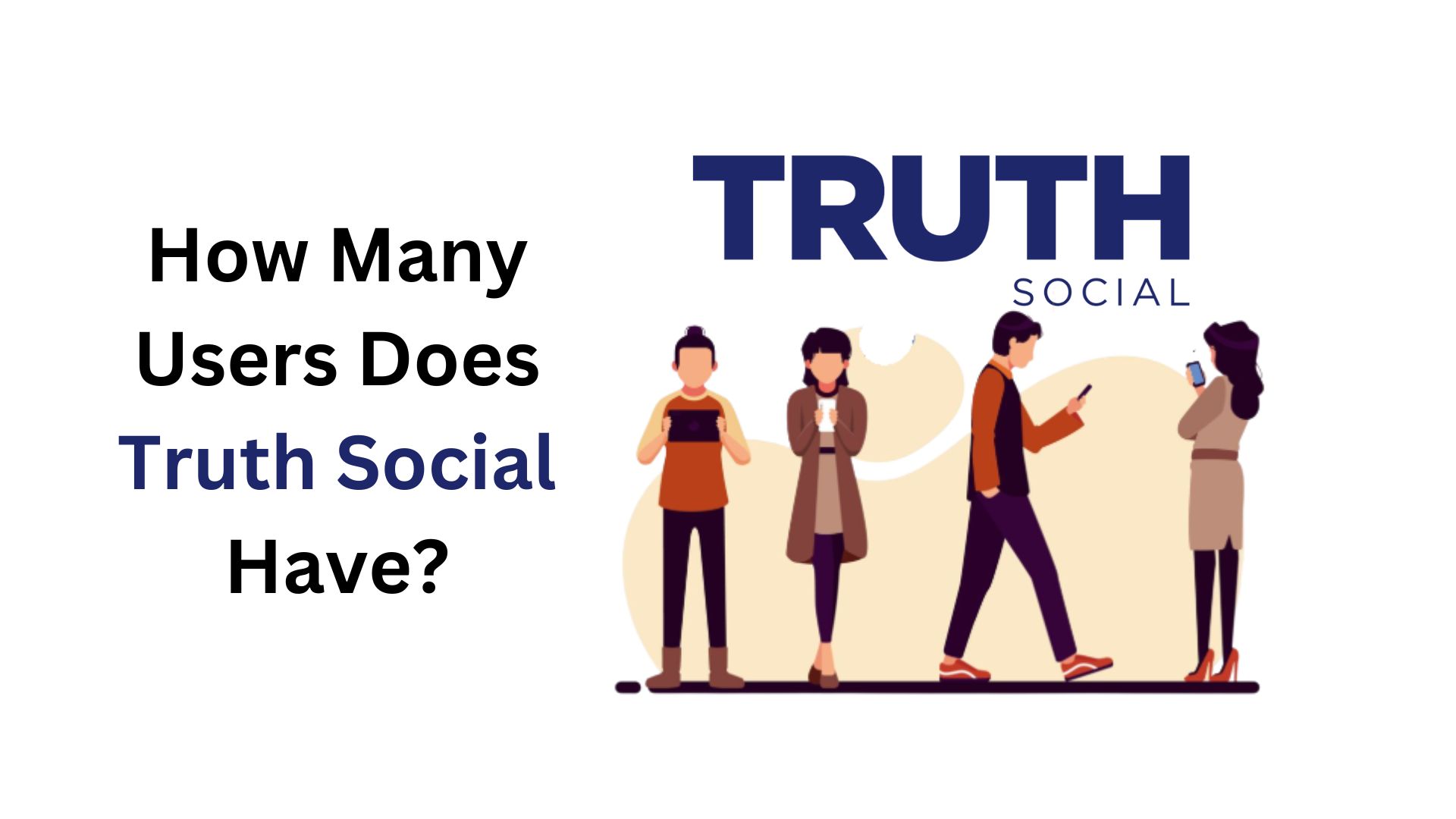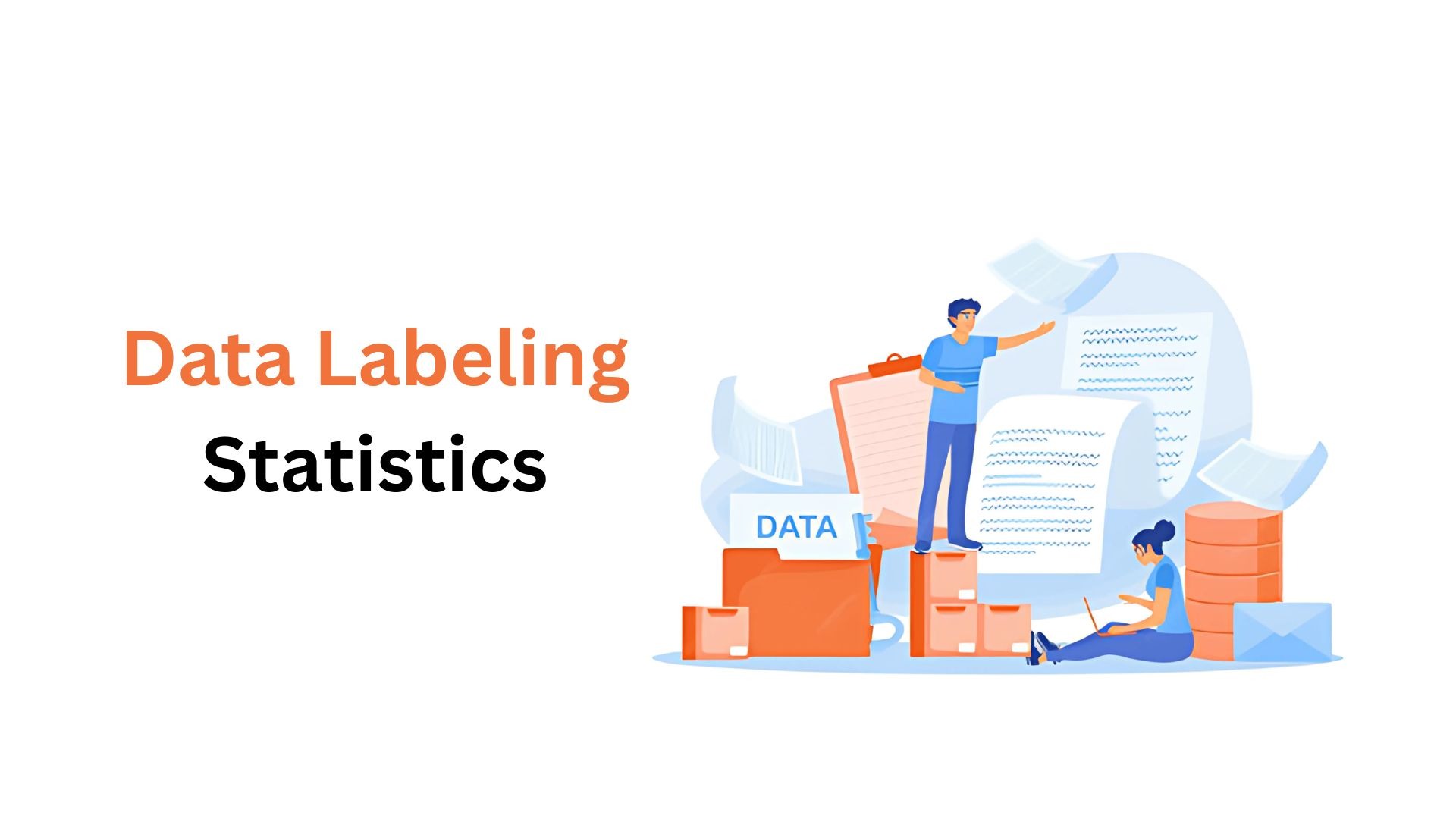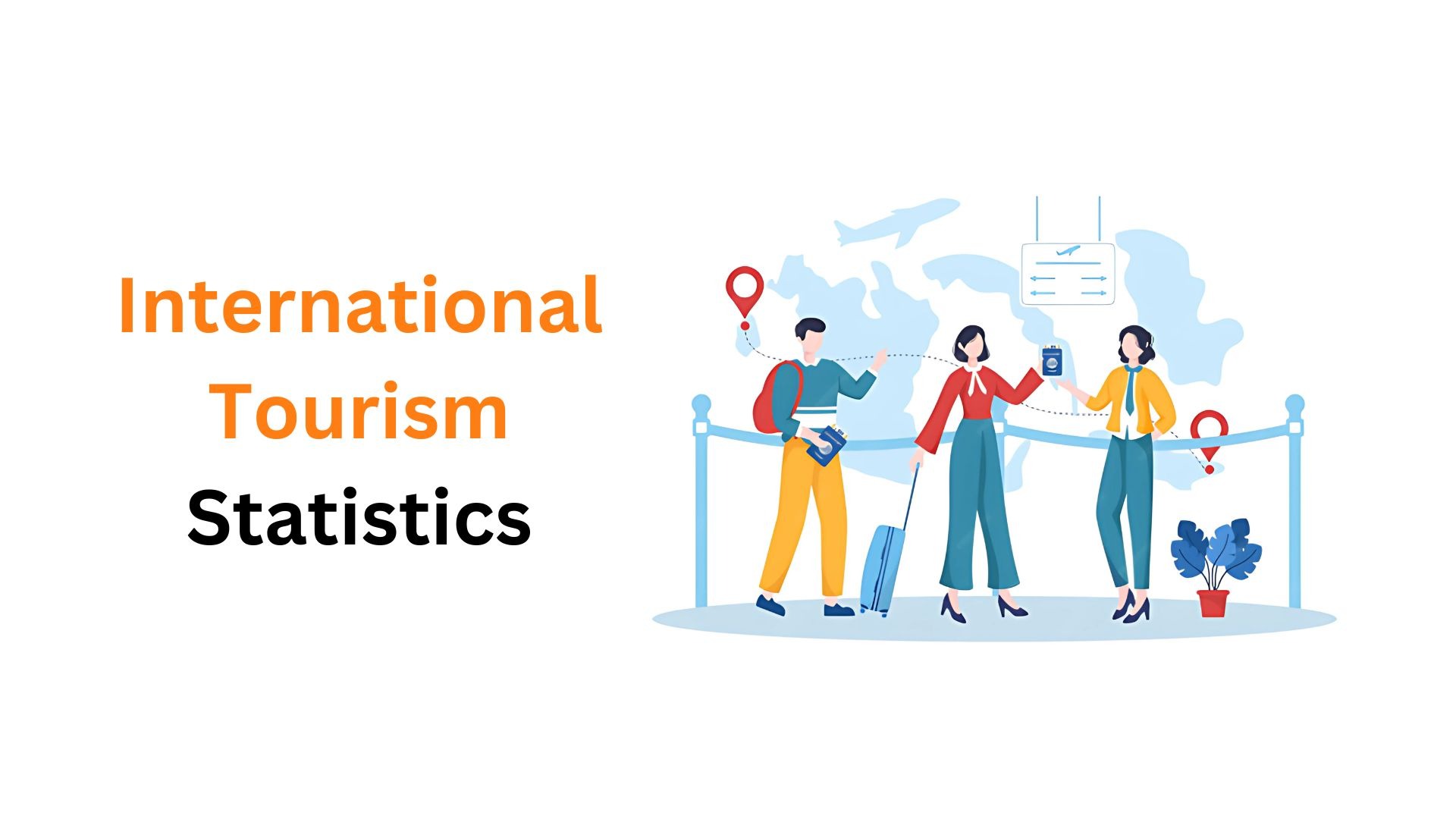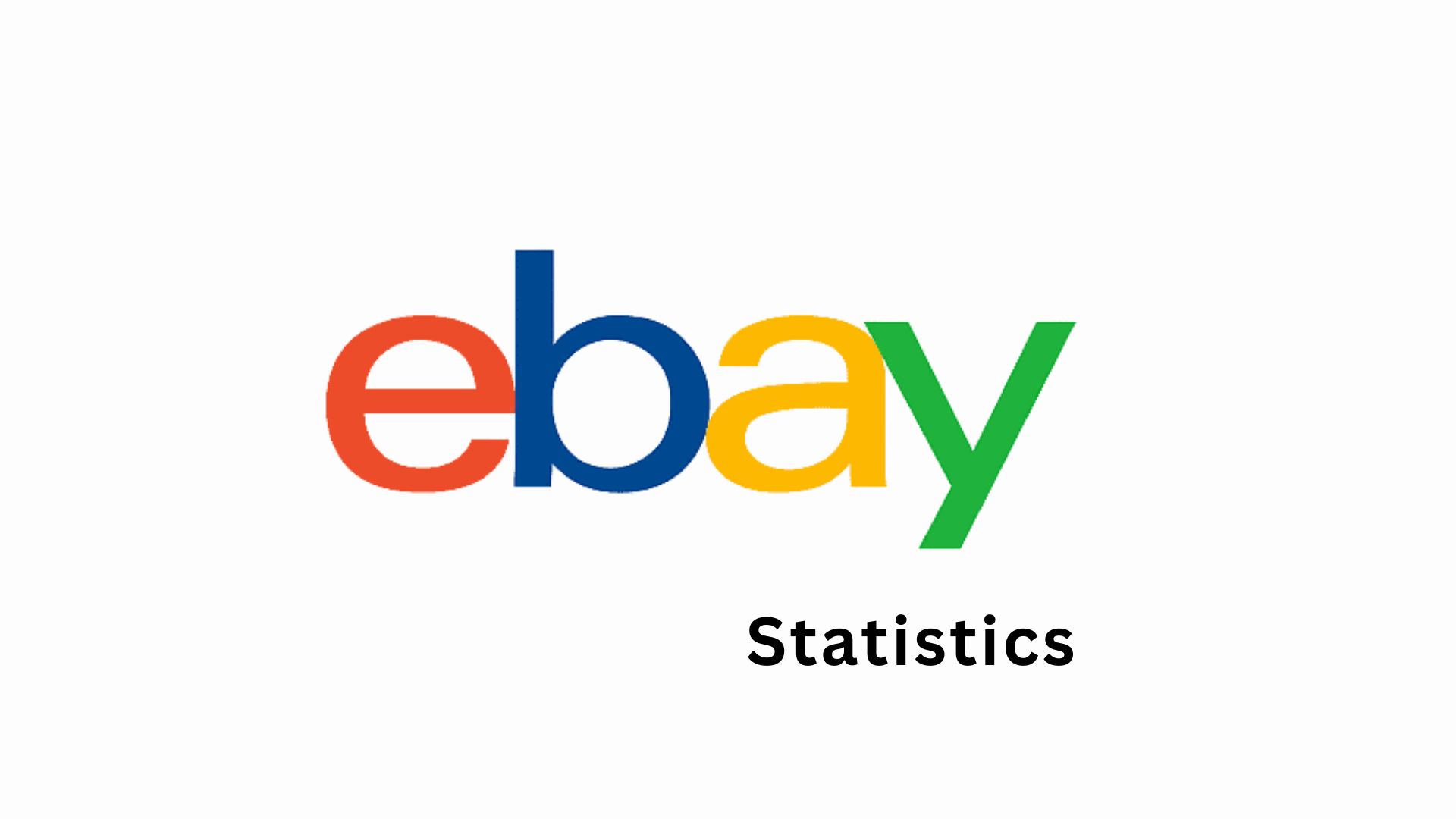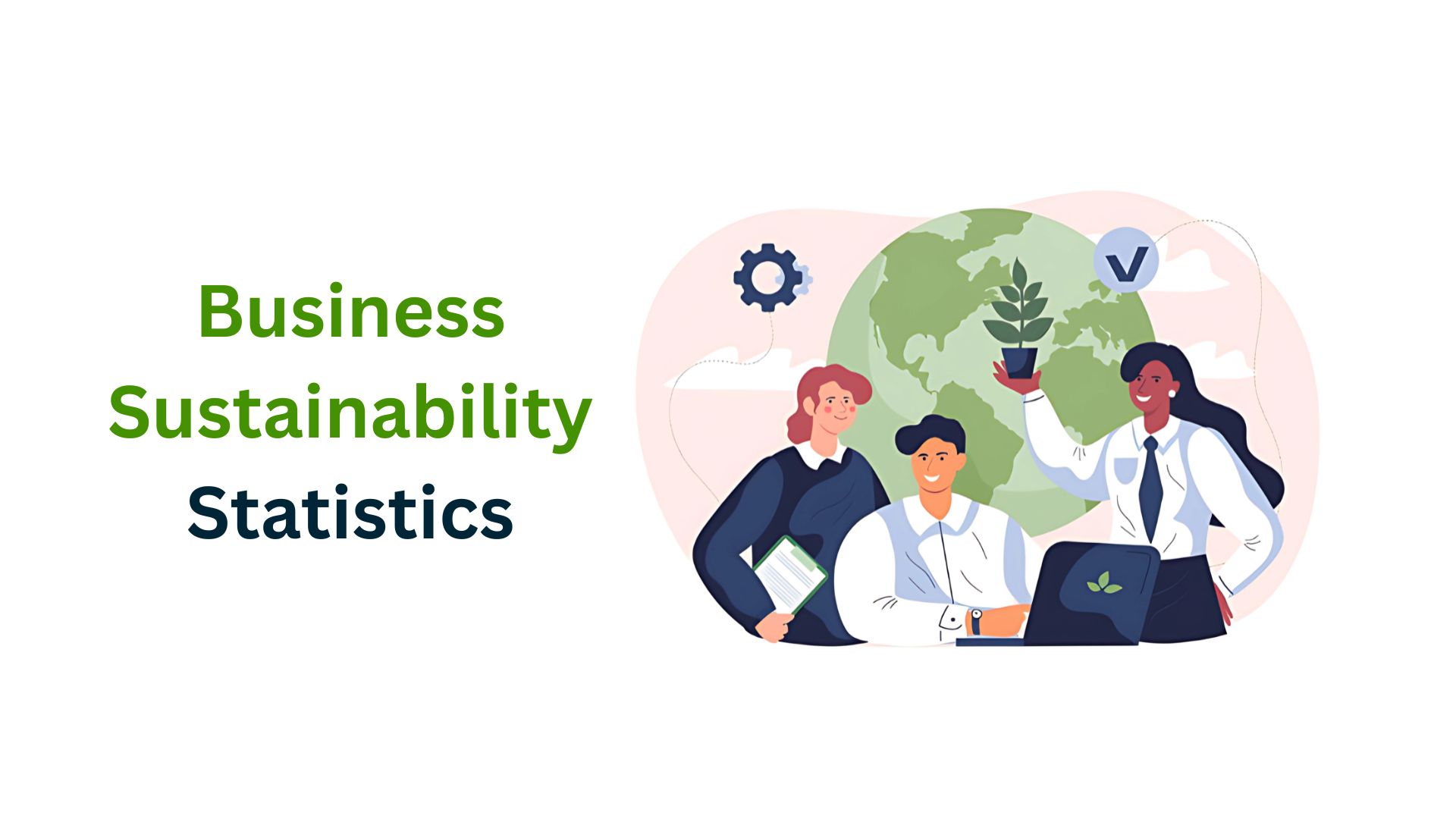Sora Statistics By Demographics And Facts (2025)
Updated · May 14, 2025
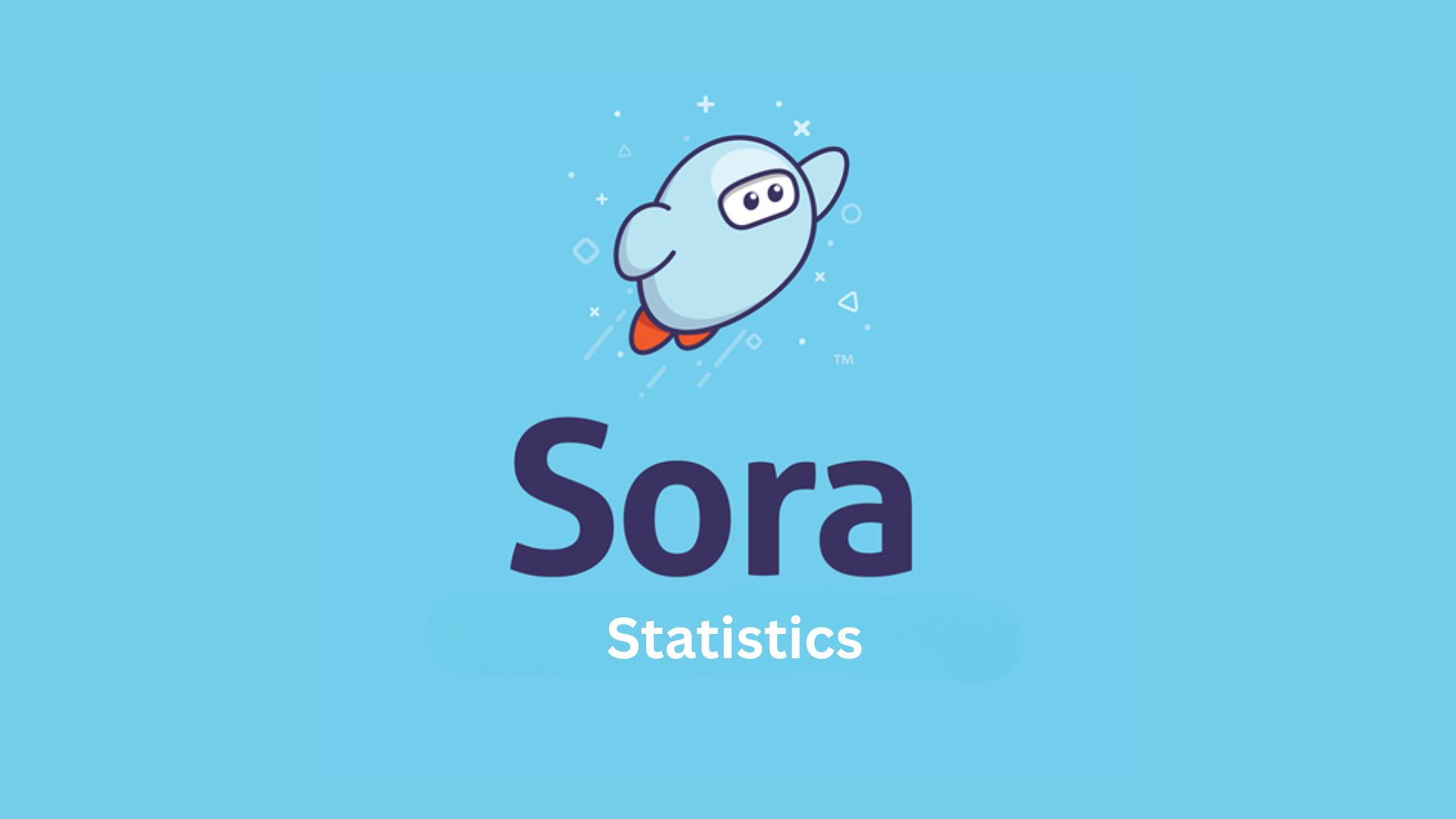
Table of Contents
Introduction
Sora Statistics: Sora, OverDrive’s digital reading platform, continues to play a pivotal role in K–12 education worldwide. In the 2023–2024 academic year, Sora experienced a 10% increase in reading sessions compared to the previous year. Ebooks remained the dominant format, comprising 85% of all titles opened, while audiobooks accounted for 11%. Digital magazine checkouts surged by 91%, representing 4% of total usage.
The Sora Sweet Reads summer program saw a 70% year-over-year growth, surpassing 1 million checkouts. Popular ebook genres included Comics & Graphic Books, Humor, Fantasy, and Biography & Autobiography. Texas led in checkouts, followed by New York, California, and Wisconsin. Regarding device usage, 37% of students accessed Sora through Chrome, 33% via iOS, and 10% through Windows.
In this article, we will witness the major highlights of Sora’s statistics.
Editor’s Choice
- The 2023-2024 academic year saw a tremendous increase for Sora, with student reading sessions increasing by 10%. This indicates that a gradual transition is being made towards digital learning tools.
- The most utilized channels of communication for the platform were Listserv (60%) and its Website (58%), while LinkedIn had the least engagement (8%).
- In 2024, the top barrier to finding attendance at Sora events remained scheduling conflicts (51%), but new users rose to 23%, showing fresh growth.
- Most Sora users are female (61.95%), while the most significant proportion of users comes from the age group 18-24 (40.17%), indicating high engagement from youths.
- Ebooks were the dominant format (85%), with audiobooks coming in second (11%). Digital magazines have seen a 91% increase in use, thereby signalling an increasing interest in alternative reading formats.
- Popular genres involved Comics & Graphic Books, Humor, Fantasy, and Biographies, while audiobooks tend to favor Humor and Historical Fiction.
- Energetic series such as Diary of a Wimpy Kid, Harry Potter, and Wings of Fire have been among the top picks of users, giving known stories enough support.
- Sora statistics state that with 37% of access from Chrome devices, 33% from iOS, and 10% from Windows, it shows how widely compatible Sora is.
- Texas led in digital reading checkouts in the U.S., with New York, California, and Wisconsin behind it, showing adoption on the state level.
- Participation in the Sora Sweet Reads program increased by 70%, topping 1 million checkouts, thereby fostering support for summer learning.
- Delaware’s statewide program put digital books into the hands of 144,000 students, driving up 15% in average reading time.
- January 2025 saw a big meteoric rise in Sora Website visits, up to 2.9 million, accompanied by good engagement metrics, with the average time spent per session standing strong above five minutes and a bounce rate of a meagre 26.72%.
Sora Utilization
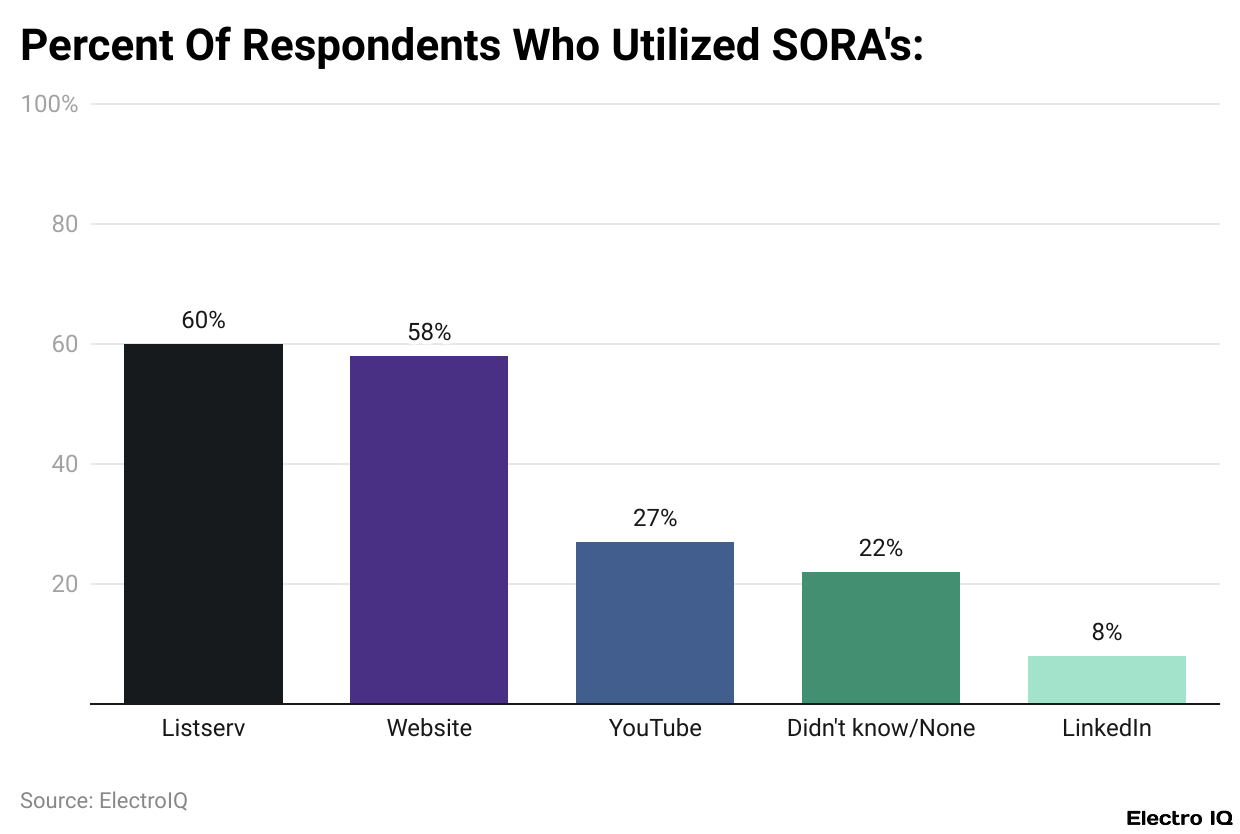
(Reference: oregonresearch.org)
- This Sora statistics data captured how respondents tried out various communication channels offered by SORA.
- Most, precisely 60% of respondents mentioned they used the Listserv, making it the top-used option.
- Coming very close, 58% of respondents were visitors to the SORA website, establishing it as a prominent source of information as well.
- About 27% of respondents acknowledged making use of YouTube, showing a moderate level of engagement with video content.
- Interestingly enough, 22% of respondents realized neither option, nor did they engage with any, showing there is an awareness or interest gap.
- Then LinkedIn had the lowest engagement with only 8% of respondents using it, which shows limited reach over there.
Berrier Participating In Sora Events

(Source: oregonresearch.org)
- Review of SORA statistics data from 2022 through 2024 reveals that scheduling conflicts remained the biggest obstacle for respondents who wanted to attend SORA events.
- While 42% of respondents identified this barrier in 2022, it rose to 55% in 2023 and dipped slightly to 51% in 2024, still over half.
- Those able to attend all events dropped from 5% in both 2022 and 2023 to only 2% in 2024, an indication of increased barriers across the board.
- Interest in content fluctuated: 22% reported they were uninterested in 2022; this rose somewhat to 25% in 2023, then dropped back down to 21% in 2024.
- Format rarely posed a major issue, declining steadily from 3% in 2022 to only 1% in 2024. Notification issues, meanwhile, declined steadily over time: 6% in 2022, to 3% in 2024.
- An interesting spike, though, was the jump in respondents identifying as new to SORA- a mere 1% in 2023, exploding to 23% in 2024- indicative of recent onboarding or growth of the platform.
- Managerial support as a barrier completely disappeared in 2024, and it dropped from 6% in 2022 to 0%. “Others” also dropped from 8% in 2022 to zero, as reported in 2024.
- Shifting from “Other” responses implies improvement in communication and managerial support, but also underscores the increasing need to accommodate newcomers and once again address scheduling challenges.
Sora Demographics
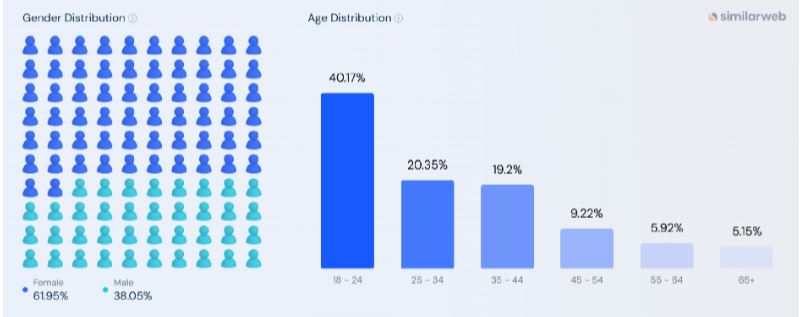
(Source: similarweb.com)
- Having over 61.95% of the audience being women, female users seemingly dominate Sora users.
- Such prominence of female users could align with general reading trends of engagement in education.
- From the age segment point of view, the highest percentage of Sora users lie in the age group of 18-24, constituting 40.17% of the Sora users, indicating first-rate usage by college-age groups or young instructors.
- Proceeding down the level of users, we encounter 25–34 age groups, making up 20.35%, and close behind are the 35–44 age groups at 19.2%.
- A sharp dip is noted in the 45–54 year-olds with 9.22%, and the level goes down further to 5.92% in 55–64 years and 5.15% for the 65 and above sector.
- In all, this distribution of Sora statistics illustrates that younger adults, particularly those perhaps in education or early in their careers, seem to be Sora’s forte.
Growth In Digital Reading
- According to Sora statistics, during the 2023–2024 school year, digital reading increased significantly once again, with a 10% rise in student reading sessions.
- This consistent upward curve is a reflection of a wider change in the educational pattern, signalling a setting where students and educators alike gravitate more toward digital platforms for learning.
- The accessibility and availability of reading materials anytime and anywhere a huge considerations in the shifting trend.
- Students using digital platforms for reading no longer have to depend on brick-and-mortar libraries for the fulfilment of their reading needs- they can read on their tablets, cell phones, or laptops, and this availability offers more flexible and personalized learning experiences.
Device Accessibility
- Sora statistics state that the students had the option of using Sora on many different devices, making this a truly flexible platform.
- Chrome-based devices came in at the highest usage with 37%.
- It is no surprise that Chromebooks rank highly among schools. iOS came in second with 33%, and Windows devices came third at 10%. This broad compatibility enables students to read anywhere they choose, considering their technology availability.
- The multidevice option further helps reduce the digital divide by providing access through either personal devices or school-issued equipment.
Regional Insights
- Specifically, some states demonstrated a large scaling up of Sora engagement. Texas ranked first for ebook and audiobook checkouts, followed by New York, California, and Wisconsin.
- These Sora statistics indicate that schools in these territories have somehow infused Sora into their curricula or library systems.
- The regional gradient also indicates that digital reading is not marked by one type of school or as a geographic location- it is being accepted at very urban and suburban to rural levels.
Sweet Reads – The Program Offered By Sora
- According to Sora statistics, the Sweet Reads program is one of Sora’s signature programs, setting the stage for a massive 70% Year-Over-Year growth in checkouts.
- It managed to topple the 1 million mark during the summer months. It is meant to keep the “summer slide” at bay by giving a student free access to a curated list of engaging eBooks and Audiobooks.
- The increase in participation demonstrates the willingness of students to read beyond the school calendar when properly motivated and facilitated.
- It also demonstrates how programs such as this enrich the learning experience beyond the four walls.
Case Study – Delaware’s Digital Reading Initiative
- Sora statistics show that a shining example of the impact of Sora can be found in the state of Delaware, which, through a statewide partnership, provided digital books for more than 144,000 students in 2021 schools, and as a result, student reading time increased by 15%, on average.
- This case shows the promise that targeted digital literacy initiatives hold in significantly increasing student engagement and thereby assuaging poor reading habits on a large scale.
- The success at Delaware can, therefore, become a blueprint for other states or districts interested in improving their digital education programs.
Website Traffic And Engagement
- The Sora platform’s official website attracted a very healthy volume of online traffic.
- Sora statistics reveal that in January 2025, it witnessed 2.9 million visits, which was upwards of 16.16% compared with the previous month.
- Visitors spent about 5 minutes and 5 seconds per visit on the site, a neat number of 8.84 pages visited on average during a session.
- The bounce rate being pretty low at about 26.72% indicates that the users were not just surfaced on the homepage and exited the site; rather, they went browsing through.
- These are powerful user engagement metrics showing that the students as well as the educators find value in the platform’s content and functionality.
Conclusion
The 2023-2024 academic year will be remembered forever, as it saw massive growth of digital reading among K-12. As per Sora statistics, the platform straddling the acceptance of both diversity and engaging content, submitted across a variety of devices, has cemented its position in the landscape of modern education.
As digital literacy gains momentum in importance, with innovation and expansion, Sora is geared to take the student learning experiences a notch higher all over the world.
Sources
FAQ.
With access to more ebooks, audiobooks, and digital magazines, the Sora platform experienced about a 10% increase in student reading sessions during the academic year 2023-2024. Additional incentives in the form of multiple-device reading and programs like Sweet Reads added to higher engagement.
This has remained the chief barrier, with 51% citing conflicting schedules in 2024. On the other hand, more users are new to the platform (23%), driving more onboarding and flexible scheduling to support these recent adopters.
Ebooks take the lion’s share in usage at 85%, followed by audiobooks at 11%. Digital magazine consumption, on the other hand, has soared by 91%. Preferred genres are Comics & Graphic Books, Humour, Fantasy, and Biographies; audiobooks prefer Historical Fiction and Mystery.
The largest population of Sora users is made up of females (61.95%), most aged 18–24 years (40.17%). The majority use Chrome devices (37%) to access Sora, followed by iOS (33%) and Windows (10%), indicating that the platform supports a vast array of devices.
Exhibit A, of course, is Delaware’s statewide initiative, with 144,000 students from about 221 schools having access to digital books and a 15% increase in average reading time registered. Meanwhile, Texas, New York, California, and Wisconsin show the highest number of checkouts for ebooks and audiobooks, displaying actual success stories for the adoption on a large scale.

Joseph D'Souza founded ElectroIQ in 2010 as a personal project to share his insights and experiences with tech gadgets. Over time, it has grown into a well-regarded tech blog, known for its in-depth technology trends, smartphone reviews and app-related statistics.

